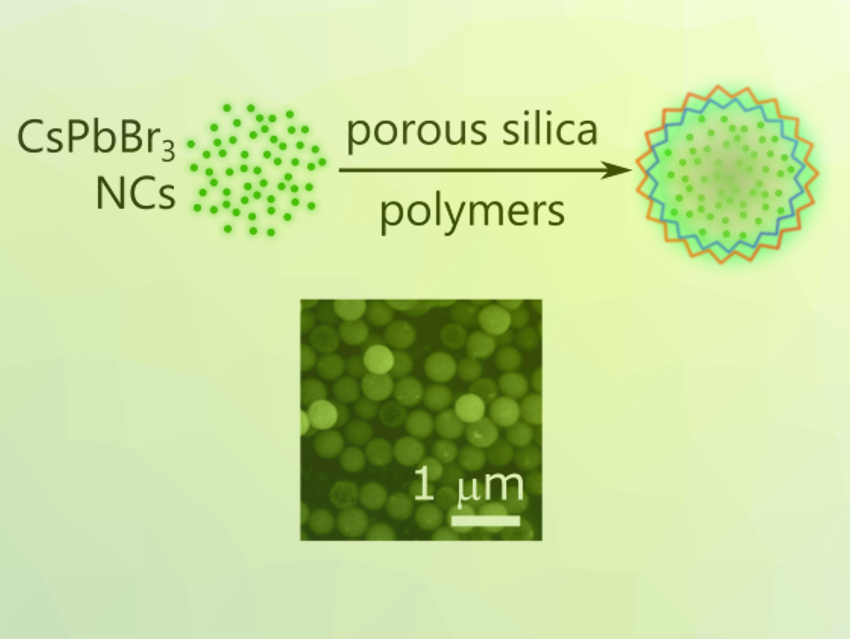Lead halide perovskite nanocrystals have useful optical properties, such as high photoluminescence quantum yields and narrow emission bandwidths. However, they are sensitive to humidity, high temperatures, and UV light and easily degrade under ambient conditions. This prevents their practical application. Finding suitable protective host matrices could help to solve this problem.
Elena V. Ushakova, ITMO University, Saint Petersburg, Russia, and City University of Hong Kong, Hong Kong SAR, China, Andrey Rogach, City University of Hong Kong, and colleagues have developed a luminescent composite material that consists of CsPbBr3 perovskite nanocrystals embedded in porous silica microspheres. The team synthesized CsPbBr3 nanocrystals from cesium carbonate and lead bromide, using octadecene (ODE) and oleylamine (OlAm) to stabilize the nanocrystals. A solution of the resulting nanocrystals was added to porous silica microspheres in order to encapsulate the CsPbBr3 in the pores of the silica material.
The optical properties of the perovskite nanocrystals remained almost unchanged after the encapsulation. The silica host improved the stability of the nanocrystals and allowed them to retain their luminescence during storage at ambient conditions, as well as under intense UV light exposure. The team also fabricated water-dispersible luminescent microspheres by coating the silica-encapsulated nanocrystals with charged polymers, i.e., poly(allylamine hydrochloride) and poly(sodium 4‐styrenesulfonate).
- Stable luminescent composite microspheres based on porous silica with embedded CsPbBr3 perovskite nanocrystals,
Elena Ushakova, Sergei Chervkov, Anastasiia Sokolova, Yanxiu Li, Ruslan Azizov, Mikhail Baranov, Dmitry Kurdyukov, Ekaterina Stovpiaga, Valery Golubev, Andrey L. Rogach, Alexander Baranov,
ChemNanoMat 2020.
https://doi.org/10.1002/cnma.202000154



![Synthesis of [c2]Daisy Chains via Mechanochemistry](https://www.chemistryviews.org/wp-content/uploads/2025/04/202504_RotaxanesWithSolidStateMechanochemistry-125x94.png)
